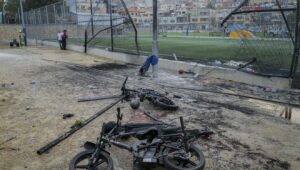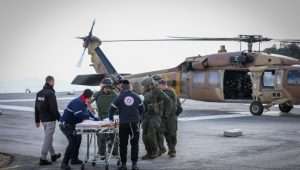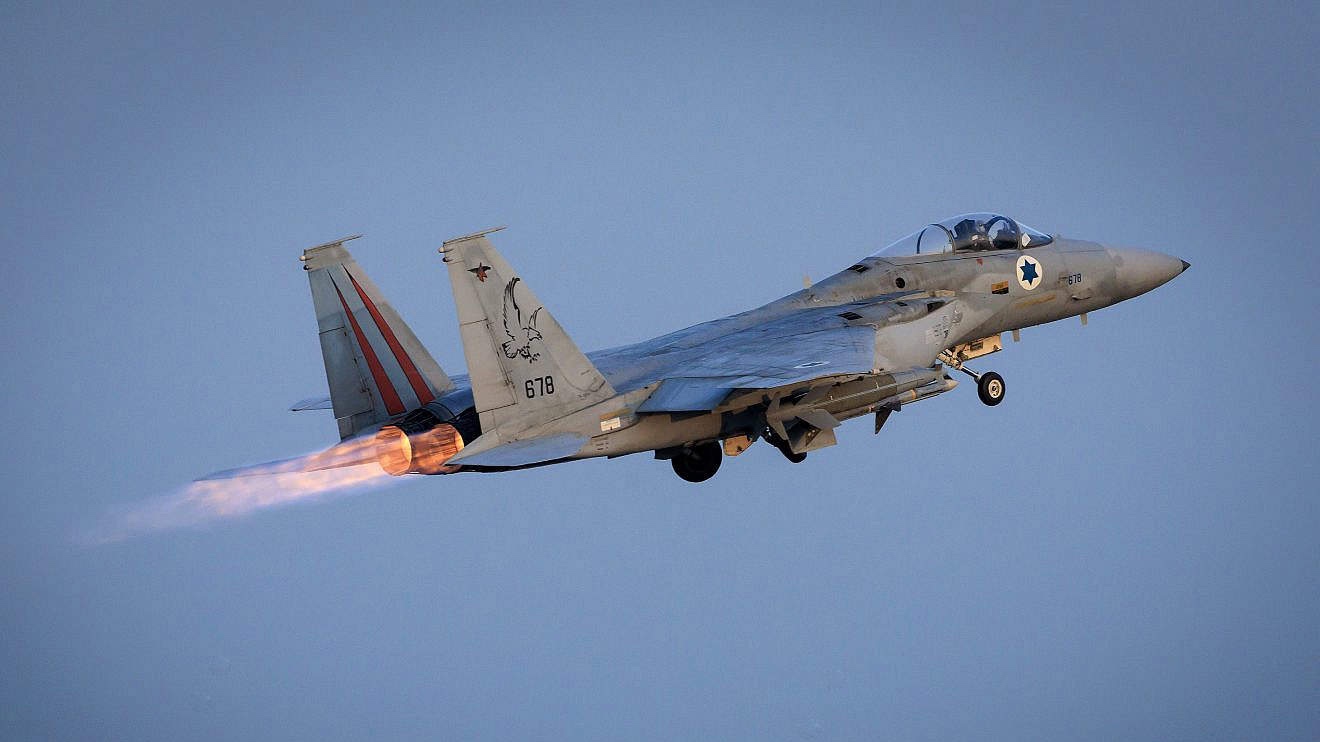(JNS) Following the Israel Defense Forces’ elimination of the chief of staff of the Hezbollah terrorist organization, Haytham Ali Tabatabai, in a precision airstrike in the Dahieh district of Beirut on Sunday, a military official provided further information about the operation.
The official said the operation was approved within a short window of opportunity and emphasized that despite the high-profile nature of the target, the action was not intended to spark a broader escalation.
“We chose to carry out the strike now after identifying a clear window of opportunity to target a key terrorist in the organization,” the military official stated. “There is no intention to escalate. This is a contained, opportunity-based elimination.”
According to the official, the strike was a direct response to Hezbollah’s accelerated efforts to rebuild its military capabilities across Lebanon in recent months, in blatant violation of the understandings reached between Israel and Lebanon in the November 2024 ceasefire.
“After the significant blows it sustained—and despite the agreement between the State of Lebanon and Israel—in recent months the [Hezbollah] organization has accelerated its attempts to rebuild its military capabilities,” the official said.
The official revealed the extent of this rearmament, noting that “over the past year, the Hezbollah terrorist organization has smuggled thousands of weapons into Lebanon in violation of the agreement, and has worked extensively to restore both above-ground and underground infrastructure as well as activity in its training camps.”
Regarding the operational context, the official described the strike as “precedent-setting,” made possible by “intensive intelligence work by the Intelligence Directorate and extensive multi-branch cooperation and synchronization by the Operations Directorate.”
The official added that numerous measures were taken before the strike to prevent harm to uninvolved civilians, accusing Hezbollah of embedding its infrastructure within civilian populations.
“We will not allow the situation to return to what it was before October 7,” the official declared. “We have acted—and will continue to act—consistently to remove threats and prevent Hezbollah’s reconstruction in the area. We call for the continuation of Hezbollah’s disarmament by the State of Lebanon.”
IDF Chief of Staff Lt. Gen. Eyal Zamir, who commanded the operation from the IDF Senior Command Post, stated on Sunday, “We struck the most senior commander in the Hezbollah terrorist organization. The strike was intended to prevent the organization from further strengthening its capabilities and to deliver a precise blow to those who attempt to harm the State of Israel.”
Zamir reiterated Israel’s stance on the current diplomatic arrangement. “The IDF remains committed to the understandings agreed upon between the State of Israel and Lebanon, but we will not allow the Hezbollah terrorist organization to strengthen or rearm, and we will act to remove any threat to the civilians of the State of Israel.”
According to Israeli military records, Tabatabai was a veteran operative who joined Hezbollah in the 1980s. He previously commanded the elite Radwan Force and served as the head of Hezbollah’s operations in Syria, where he helped entrench the group’s capabilities. During the recent war, he commanded the organization’s operations array and, following the neutralization of the group’s leadership during Operation “Northern Arrows,” led the efforts to rebuild the organization and restore its readiness for war with Israel.
While the IDF operates in Beirut to degrade Hezbollah’s command structure, a separate security effort on the northern border has sparked a diplomatic dispute with the United Nations and the Lebanese government regarding the construction of a new concrete barrier.
The United Nations Interim Force in Lebanon claimed on November 14 that the controversy centers on construction near the Lebanese town of Yaroun, where UNIFIL and Lebanese officials claim the concrete wall crosses the internationally recognized Blue Line.
According to a November 15 report by Reuters, the barrier has effectively cut off “more than 4,000 square meters” (nearly an acre) of land, rendering it inaccessible to Lebanese residents.
The IDF declined to comment on the barrier’s location.
Orna Mizrahi, a senior researcher at the Institute for National Security Studies (INSS) in Tel Aviv, and former Deputy National Security Adviser for Foreign Policy, told JNS that there is a significant gap between the Israeli and Lebanese narratives regarding the wall’s location relative to the Blue Line.
“Of course, the construction of the wall is done for security reasons,” Mizrahi said. “According to the Israeli side, it is still in an area that is not in Lebanese territory. In contrast, the Lebanese and also UNIFIL claimed in an official statement that the wall penetrates into Lebanese territory even after a tour they conducted at the site.”
Mizrahi noted that the dispute is being leveraged within Lebanon to frame Israel as an aggressor. “On Lebanese networks, of course, claims are rising that this is not just a move for security needs, but that it expresses Israel’s aspirations for expansion,” she explained. “Lebanon submitted a complaint to the UN Security Council on the subject.”
The construction of the concrete barrier is part of the IDF’s broader effort to “change the security reality on the northern border,” as noted by the military official, following the lessons of October 7.
The 120-kilometer Blue Line, established by the United Nations in June 2000 to verify Israel’s withdrawal from Lebanon, is a temporary line of withdrawal rather than a final international border. Disagreements over the exact placement of the line in certain areas have persisted for years, creating friction points.
Want more news from Israel?
Click Here to sign up for our FREE daily email updates














